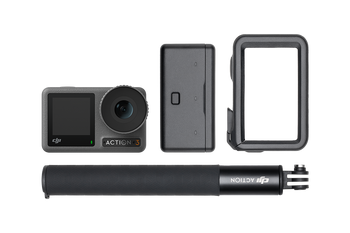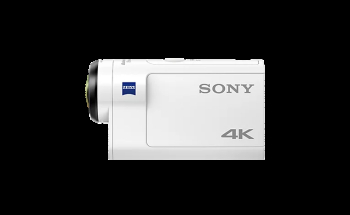- Portable and lightweight
- High-quality video
- User-friendly
- Smooth stabilization
- Excellent video quality
- Advanced stabilization
- Durable build
- Sharp and vibrant images
- Limited advanced features
- Battery life could be better
- Short battery life
- Heavier than some competitors
DJI Osmo Action 3 vs Sony FDR-X3000
The world of action cameras has exploded in recent years, with numerous options available to capture high-quality footage on-the-go. Two popular models that have garnered significant attention are the DJI Osmo Action 3 and the Sony FDR-X3000. In this comparison, we'll delve into the features, specifications, and performance of these two action cameras to help you decide which one is best suited for your needs.
Design and Build
The DJI Osmo Action 3 boasts a rugged and compact design, weighing in at approximately 145 grams. Its durable construction can withstand extreme temperatures, from -20°C to 40°C, and is also waterproof up to 16 meters without the need for an additional housing. The camera's dual-screen design features a 1.4-inch front screen and a 2.5-inch rear touchscreen, making it easy to frame shots and navigate through menus.
In contrast, the Sony FDR-X3000 has a slightly larger and heavier design, weighing around 170 grams. While it's also waterproof up to 10 meters without a housing, its body is not as compact as the Osmo Action 3. The FDR-X3000 features a single 3-inch touchscreen display on the rear, which provides an intuitive interface for adjusting settings and reviewing footage.
Image Quality
Both action cameras are capable of capturing stunning video footage, but there are some differences in their image quality. The DJI Osmo Action 3 can shoot up to 4K resolution at 60fps, with a maximum bitrate of 100Mbps. It also features a 1/2.3-inch CMOS sensor, which provides excellent low-light performance and color accuracy.
The Sony FDR-X3000, on the other hand, can record up to 4K resolution at 30fps, with a maximum bitrate of 50Mbps. While its image quality is still impressive, it may not match the Osmo Action 3's level of detail and clarity, particularly in low-light conditions. However, the FDR-X3000 does feature Sony's proprietary Balanced Optical SteadyShot (B.O.SS) technology, which provides excellent stabilization and smooth footage.
Stabilization and Features
Both cameras feature advanced stabilization systems to ensure smooth and shake-free footage. The DJI Osmo Action 3 boasts a built-in electronic image stabilization (EIS) system, which can be combined with its gimbal-like design to provide incredibly stable video. Additionally, the camera features a range of modes, including slow-motion, time-lapse, and hyperlapse.
The Sony FDR-X3000, as mentioned earlier, features Sony's B.O.SS technology, which provides excellent optical stabilization. It also offers a range of features, including GPS, Wi-Fi, and NFC connectivity, making it easy to transfer footage and adjust settings remotely. The camera also features a built-in stereo microphone and supports external microphones for improved audio quality.
Battery Life and Accessories
In terms of battery life, the DJI Osmo Action 3 has a slightly longer lifespan, with up to 2.5 hours of continuous recording time. The Sony FDR-X3000, on the other hand, can record for up to 2 hours on a single charge. Both cameras support external batteries and power banks, making it easy to extend their battery life.
When it comes to accessories, both cameras have a range of options available, including housings, mounts, and adapters. The DJI Osmo Action 3 is compatible with DJI's existing ecosystem of accessories, while the Sony FDR-X3000 can be paired with Sony's range of action camera accessories.
Conclusion
In conclusion, both the DJI Osmo Action 3 and the Sony FDR-X3000 are high-quality action cameras that offer a range of features and capabilities. While the Osmo Action 3 excels in terms of image quality, design, and stabilization, the FDR-X3000 offers excellent optical stabilization and a range of features like GPS and Wi-Fi connectivity.
Ultimately, the choice between these two action cameras will depend on your specific needs and preferences. If you're looking for a compact, rugged camera with exceptional image quality, the DJI Osmo Action 3 may be the better choice. However, if you prioritize optical stabilization and a range of features like GPS and Wi-Fi connectivity, the Sony FDR-X3000 is definitely worth considering.
As the market for action cameras continues to evolve, it's exciting to see manufacturers like DJI and Sony pushing the boundaries of what's possible in terms of image quality, design, and features. Whether you're a professional filmmaker or an adventure-seeker looking to capture stunning footage on-the-go, there's never been a better time to explore the world of action cameras.































